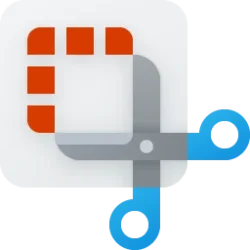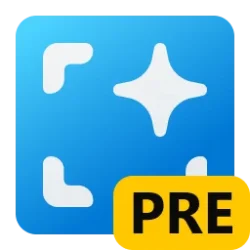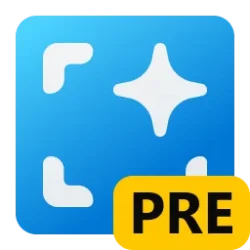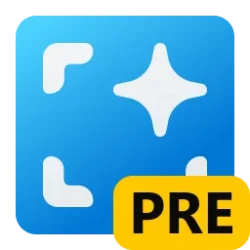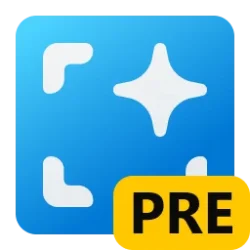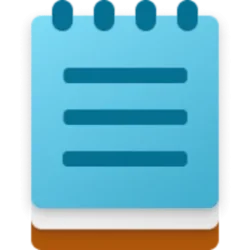Navigation
Install the app
How to install the app on iOS
Follow along with the video below to see how to install our site as a web app on your home screen.
Note: This feature may not be available in some browsers.
More options
Style variation
-
Disable Automatic Windows Updates in Windows 11
This tutorial will show you how to disable Windows Update from automatically downloading and installing updates in Windows 10 and Windows 11.- Brink
- Replies: 13
-
Use ViVeTool to Enable or Disable Hidden Features in Windows 11
This tutorial will show you how to use ViVeTool to enable or disable hidden features in Windows 10 and Windows 11.- Brink
- Replies: 49
-
Restore Classic File Explorer with Ribbon in Windows 11
This tutorial will show you how to restore the classic File Explorer with Ribbon for your account or all users in Windows 11.- Brink
- Replies: 407
-
Create Windows 11 Bootable USB Installation Media
This tutorial will show you how to create a bootable USB flash drive used to install Windows 11 with UEFI support.- Brink
- Replies: 128
-
Uninstall or Reinstall Copilot app
This tutorial will show you different ways to uninstall or reinstall the Copilot app for your account or all users in Windows 10 and Windows 11.- Brink
- Replies: 0
-
Add or Remove "Learn about this picture" Desktop icon
This tutorial will show you how to add or remove the "Learn about this picture" desktop icon when using Windows Spotlight as your desktop background for your account in Windows 11 and Windows 10.- Brink
- Replies: 27
-
Use SFC to Repair System Files in Windows 11
This tutorial will show you how to run the System File Checker (SFC) tool to repair missing, corrupted, and modified system files in Windows 10 and Windows 11.- Brink
- Replies: 25
-
Download Official Windows 11 ISO file from Microsoft
This tutorial will show you how to download an official Windows Server ISO or Windows 11 64-bit or ARM64 ISO file from Microsoft.- Brink
- Replies: 416
-
Repair Install Windows 11 with an In-place Upgrade
This tutorial will show you how to do a repair install of Windows 11 by performing an in-place upgrade without losing anything.- Brink
- Replies: 339
-
Clean Install Windows 11
This tutorial will show you step by step on how to clean install Windows 11 at boot on your PC with or without an Internet connection and setup with a local account or Microsoft account.- Brink
- Replies: 241
You are using an out of date browser. It may not display this or other websites correctly.
You should upgrade or use an alternative browser.
You should upgrade or use an alternative browser.
Tutorials
Windows 11 tutorials, tricks, tips, and guides.
Filters
Show only:
Loading…
This tutorial will show you step by step on how to use an ISO or USB to manually upgrade to Windows 11 from Windows 11 (older build/version), Windows 10, Windows 8.1, or Windows 7.
Windows 11 has all the power and security of Windows 10 with a redesigned and refreshed look. It also comes with new tools, sounds, and apps. Every detail has been considered. All of it comes together to bring you a refreshing experience on your PC.
Most devices available for purchase now will be upgradeable to Windows 11. You will have the option to upgrade, clean install, or reimage Windows 10 devices to move to Windows 11. For Windows 7, Windows 8, and Windows 8.1 devices that meet hardware requirements, you will need to clean install or reimage to go...
This tutorial will show you different ways on how to put your Windows 11 computer to sleep.
Sleep uses very little power, your PC starts up faster, and you’re instantly back to where you left off. You don’t have to worry that you'll lose your work because of your battery draining because Windows automatically saves all your work and turns off the PC if the battery is too low. Use Sleep when you’re going to be away from your PC for just a little while.
On most PCs, you can resume from sleep by pressing your PC's power button. However, not all PCs are the same. You might be able to wake it by pressing any key on the keyboard, clicking a mouse button, or opening the lid on a laptop. Check the documentation that came with your computer or...
This tutorial will show you how to enable or disable networking in Windows Sandbox for all users in Windows 10 and Windows 11.
Windows Sandbox provides a lightweight desktop environment to safely run applications in isolation. Software installed inside the Windows Sandbox environment remains "sandboxed" and runs separately from the host machine.
A sandbox is temporary. When it's closed, all the software and files and the state are deleted. You get a brand-new instance of the sandbox every time you open the app.
Networking in Windows Sandbox is done by creating a virtual switch on the host (Windows 10/11), and connects the Windows Sandbox to it via a virtual NIC.
Disabling network access can decrease the attack surface exposed by the...
This tutorial will show you how to change the “All” page view in the Start menu for your account in Windows 11.
The Start menu is comprised of three sections: Pinned, Recommended, and All apps page.
In Windows 11 build 22635.4950 (Beta 23H2), Microsoft is introducing two new views to the “All” page in the Start menu: grid and category view. Grid and list view shows your apps in alphabetical order and category view groups all your apps into categories, ordered by usage. This change is gradually rolling out so you may not see it right away. Microsoft plans to begin rolling this out to Windows Insiders who are receiving updates based on Windows 11, version 24H2 in the Dev and Beta Channels soon.
⚠️ If you don't have this feature...
This tutorial will show you how to export and import registry keys in Registry Editor using a REG file in Windows 10 and Windows 11.
System configuration information is stored centrally in a hierarchical database called the registry. You can use Registry Editor to add and edit registry keys and values, restore the registry from a backup or to default values, and to import or export keys for reference or backup.
You can export registry keys from Registry Editor to back up the selected key and its subkeys values and data to a REG file.
You can import a REG file to restore its keys, values, and data settings back to Registry Editor.
The HKEY_CURRENT_USER (HKCU) branch only affects the current user, and does not require being an...
Personalization Disable Folder Thumbnail Previews without Disabling File Thumbnail Previews in Windows 11
This tutorial will show you how to disable only folder thumbnail previews without disabling file thumbnail previews for your account in Windows 10 and Windows 11.
File Explorer can display thumbnail previews of files in Windows 11.
Starting with Windows 11 build 22557, File Explorer will now show previews of items within folders.
File Explorer displays a thumbnail preview image of the last item added to the folder by default.
Thumbnail previews will not show while using a Small icons, List, or Details folder layout.
If you disable thumbnail previews in File Explorer, it will disable both folder and file thumbnail previews.
If you reset folder view settings to default, it will undo this method to disable only folder thumbnail...
UUP Dump is the most practical and easy way to get ISO images of any Insider Windows 10 or Windows 11 version, as soon as Microsoft has released a new build. UUP Dump creates a download configuration file according to your choices, downloads necessary files directly from Microsoft servers, and finally creates an ISO image.
Please notice, that you don't have to join Windows Insider program to install and use Insider builds. You can simply download and install any Insider build from UUP Dump, and when an Insider build upgrade is released, download the upgrade build and upgrade your current Insider installation.
This tutorial will show you how to use UUP Dump to get any Windows Insider ISO.
1. In any browser, open an available link...
This tutorial will show you how to check how long ago the Phone Link app was last updated and synced between your phone and Windows 10 or Windows 11 PC.
With the Phone Link app on your PC linked to your Android phone, you can instantly access the Android apps installed on your mobile device right on your Windows 10 or Windows 11 PC. Using a Wi-Fi connection, Apps allows you to browse, play, order, chat, and more — all while using your PC’s larger screen and keyboard.
The Phone Link will automatically keep itself updated and synced between your linked phone and PC by default.
You can check when Phone Link was last updated to see if it's current and if you may need or want to manually refresh the Phone Link app.
Here's How:
1 Open...
This tutorial will show you how to add or remove the "Edit in Notepad" context menu for your account or all users in Windows 11.
Notepad is a fast and simple text editor that can be used to view, edit, and search through plain text documents instantly.
Starting with Notepad version 11.2311.33.0, you can now easily access Notepad for file modifications directly from File Explorer. Just right-click on any file or multiple files in File Explorer to find the Edit in Notepad option in the context menu, a quick and streamlined way to open and edit files in Notepad.
If you don't want this new Edit in Notepad item in the context menu, it can be removed.
Option One: Add or Remove "Edit in Notepad" Context Menu for Current User
Option Two...
Browsers and Mail Enable or Disable Bing "Trending Searches" Suggestions in Address Bar of Microsoft Edge
This tutorial will show you how to remove Bing "Trending Searches" in the Microsoft Edge address bar suggestion dropdown for your account or all users in Windows 10 and Windows 11.
When you click on the address bar while on a New Tab Page in Microsoft Edge, you will see Bing Trending Searches by default in the address bar’s suggestion dropdown.
You can turn on or off showing Bing "Trending Searches" in the Edge address bar autosuggestion dropdown if wanted.
Reference:
https://www.microsoft.com/en-us/edge/features/address-bar?form=MA13FJ
Option One: Turn On or Off Bing "Trending Searches" Suggestions in Microsoft Edge for Current User from Settings
Option Two: Enable or Disable Bing "Trending Searches" Suggestions in Microsoft...
This tutorial will show you how to scan a QR code on a Windows 11 PC.
A QR code is a type of matrix barcode that can be used to share URL links of sites. To scan this code, you can use a QR scanner app on your phone, or some camera apps.
The Camera app included in Windows 11 will allow you to scan a QR code with your PC's camera (webcam).
Starting with Windows 11 build 26052 (Canary and Dev), You can now use the Camera app to join a Wi-Fi network. Just scan a QR code with Wi-Fi details and a link will be provided that will open Settings to quickly get the new Wi-Fi profile added and connected. As a reminder, starting with Build 25977 in the Canary Channel you can create your own QR code for Wi-Fi and share it with others. This also...
Latest Tutorials
-
-
Apps Copy Text on Screen using Text Extractor in Snipping Tool app in Windows 11
- Started by Brink
- Replies: 0
-
-
-
-
-
Apps Enable or Disable Copilot AI Features in Notepad app for Windows 11
- Started by Brink
- Replies: 0
-
Browsers and Mail View Blocked Trackers from Sites in Microsoft Edge
- Started by Brink
- Replies: 0
-
Browsers and Mail Add or Remove Site Exceptions for Tracking Prevention in Microsoft Edge
- Started by Brink
- Replies: 1
-
Tutorial Tags
android
background
battery
bitlocker
bluetooth
boot
color
context menu
copilot
defender
desktop
display
drive
edge
file explorer
folder
fonts
hyper-v
icon
keyboard
libraries
location
mouse
notifications
onedrive
outlook
pen
pointer
power
printer
recall
screenshot
search
settings
share
shortcuts
sign-in
sound
start menu
store
taskbar
terminal
theme
touch
usb
voice
wi-fi
widgets
wsa
xbox












